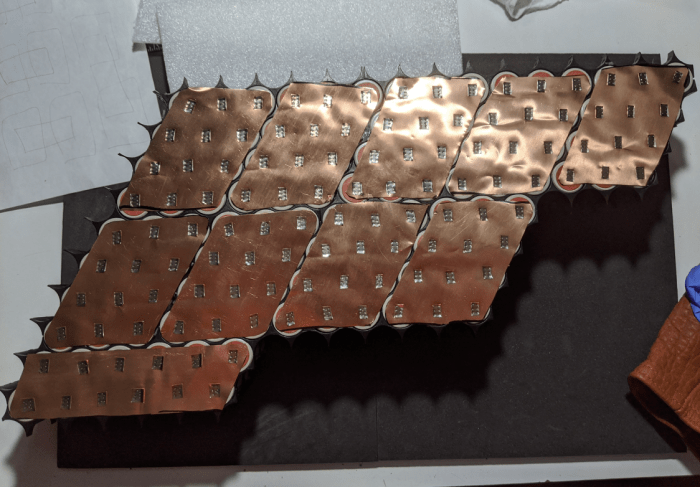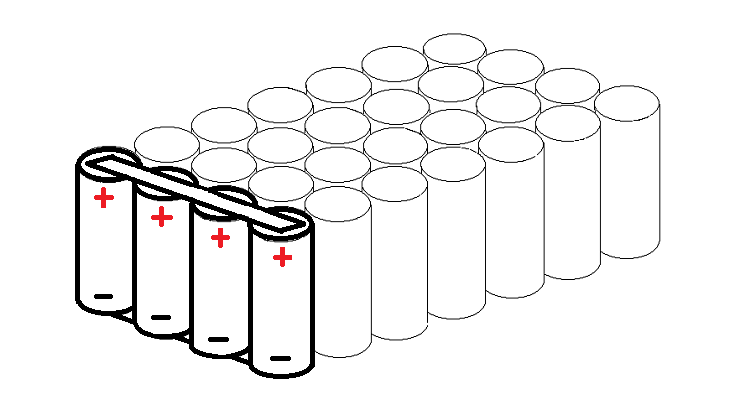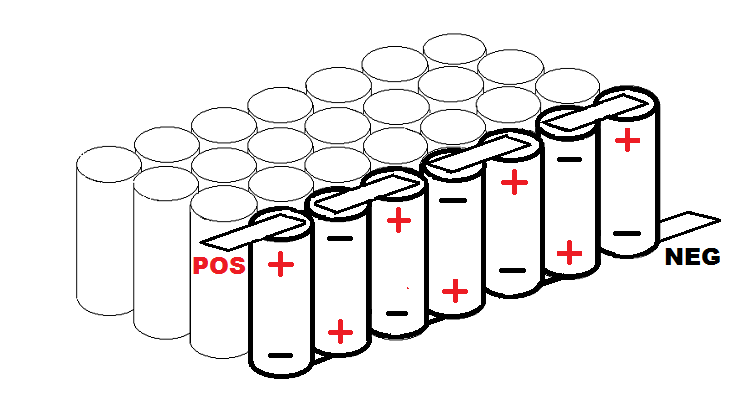eMark
100 kW
.
At first glance, and second, and third and ... thought the following photo was 10S12P ... really can't tell from photo that it's actually 20S6P. If you look really, really close at the top right cell in the middle top group of 12 you can barely make out the negative end (with some imagination :wink: ); whereas the bottom left cell in that same group of 12 looks to be the positive end (red insulator ring).
That's the only imaginary clue that would support that it actually is a 20S6P pack ... other than Ron's word which is trustworthy.
My point of all this beginning with my first (locked) thread is that the contact of series cell bus bars with parallel cell bus bars helps to keep all the cells balanced (to a point) depending on cell quality, usage and condition of the pack as it ages with more and more c/d cycles.

How many series cells in this "20S / 6P" triangular pack ... anyone else think there are 120 series cells ?
Can someone post a photo or diagram of a battery pack that believes fewer series cells than parallel cells is an advantage ?
At first glance, and second, and third and ... thought the following photo was 10S12P ... really can't tell from photo that it's actually 20S6P. If you look really, really close at the top right cell in the middle top group of 12 you can barely make out the negative end (with some imagination :wink: ); whereas the bottom left cell in that same group of 12 looks to be the positive end (red insulator ring).
That's the only imaginary clue that would support that it actually is a 20S6P pack ... other than Ron's word which is trustworthy.
My point of all this beginning with my first (locked) thread is that the contact of series cell bus bars with parallel cell bus bars helps to keep all the cells balanced (to a point) depending on cell quality, usage and condition of the pack as it ages with more and more c/d cycles.
spinningmagnets said:Molicel 21700 P42A cells, 0.10mm copper sheet, plus 0.15 nickel squares only to facilitate welding. 20S / 6P
https://endless-sphere.com/forums/viewtopic.php?f=14&t=108006
How many series cells in this "20S / 6P" triangular pack ... anyone else think there are 120 series cells ?
Can someone post a photo or diagram of a battery pack that believes fewer series cells than parallel cells is an advantage ?



